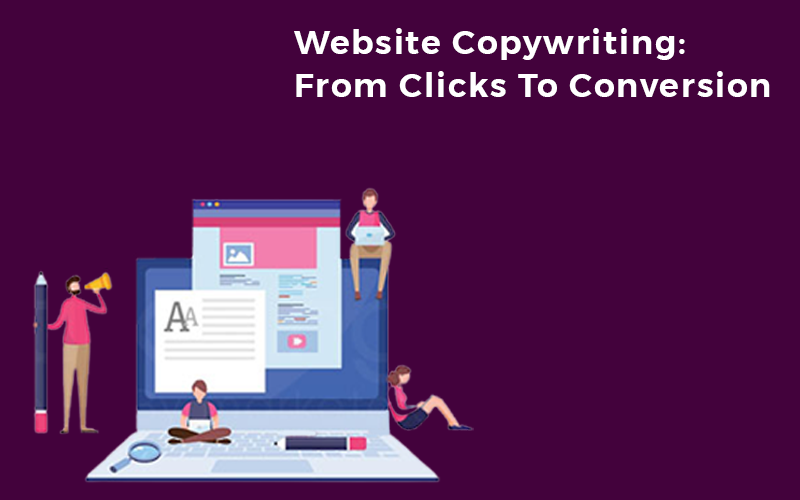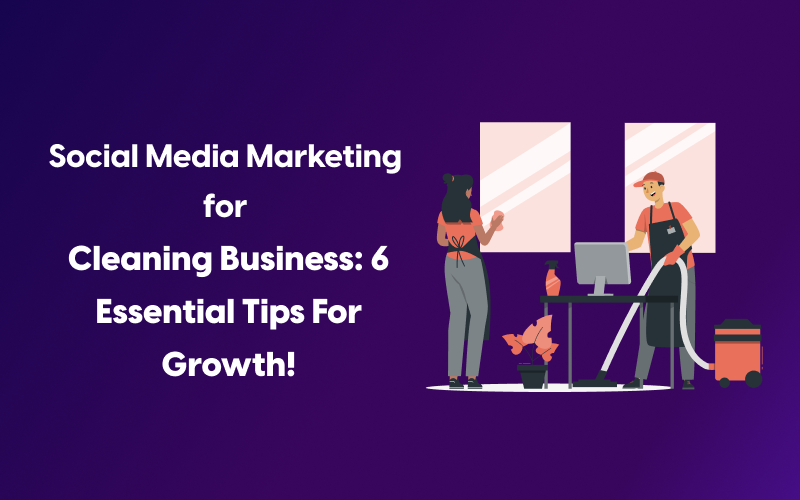Welcome to the fabulous world of SEO website copywriting! A party where the words in your content groove to the rhythm of Google’s algorithm beats, and the crowd cheers with clicks and conversions. But hey, what’s the secret recipe? Let’s dive in!
What is SEO Website Copywriting?
Picture yourself as a word chef! You want to create the perfect content that ranks on the top! You’re trying up different stuff – mixing up creativity, persuasion, and search engine optimization techniques in a huge pot.
The results of the fruits of your labor? Scrumptious SEO copywriting!
It’s the craft of making content that pleases human taste buds and search engines’ cravings. You look at what people are searching Google for, and you create content centering around that!
Search engine economics – a simple game of demand and supply. In short, it’s human writing with an algorithmic twist!
What is SEO Copywriting & Why It Matters?
Picture this: The Internet is a gigantic ocean with no navigation to help you. As a business aiming to rely on clicks and conversions on its online marketplace, aka website, you need a compass.
SEO is not just a mere compass. Instead, SEO is like the lighthouse, guiding all the Internet explorers (pun intended) to your shores.
A well-optimized website means more folks find and engage with your content. It’s like hosting the ultimate party, where you want the right guests and a fantastic time!
Traditional Website Copywriting vs. SEO Copywriting & Content Creation
They may seem like distant cousins, but traditional website copywriting and SEO copywriting are more like siblings with the same mission. Both want to woo their audience but use slightly different strategies.
Traditional copywriting sparkles with persuasive language, while SEO copywriting adds keyword magic and algorithmic pixie dust.
Together, they create a potent concoction to attract, engage, and convert leads into raving fans.
Many other types of copywriting techniques include website copywriting, pointed copywriting, email copywriting, and social media copywriting.
Let’s dive into more details and explore how SEO website copywriting can be a game-changer for your brand!
What Is the Difference Between Website Copywriting and Content Writing?
Website copywriting and content writing are two distinct forms of writing with different purposes and goals. Both involve creating written material for websites, but they serve different functions and require different approaches.
Website copywriting primarily aims to persuade and convert visitors into customers or prompt them to take a specific action. Its main goal is to drive sales, generate leads, or encourage users to subscribe, sign up, or make a purchase.
Copywriters focus on creating compelling, concise, and persuasive content that grabs the reader’s attention and motivates them to act.
On the other hand, content writing focuses on providing valuable information, educating, entertaining, or engaging the website’s audience.
Content writers often create articles, blog posts, guides, or other forms of content that cater to the target audience’s interests and needs. Their primary goal is to build brand authority, attract and engage visitors, and establish a long-term relationship with the audience.
Keyword Research For Your Website Copy
The right keywords are the key to unlocking the treasures of high rankings and organic traffic. But, of course, you must know what the people are looking for to offer them the right stuff! And this is the foundational aim of keyword research.
You look for keywords high in search volume and low in keyword difficulty (competition). You also consider how much people spend on advertisements revolving around those keywords (CPC).
With these details on hand, you conduct rigorous research to get the juice your content needs!
Keyword Research Tools To The Rescue
Fear not! We’ve got trusty friends like Semrush’s Keyword Magic Tool – our digital sidekick, chirping out handy tips to steer our voyage through the keyword ocean. There are many more, such as Ahrefs, Ubersuggest, Google Keyword Planner, etc. You can examine their pros and cons and use what suits you best!
Seed Keywords
As any savvy pirate knows, the best treasure hunts begin with a solid base: seed keywords. These anchors steady our keyword research vessel, helping us find related, long-tail phrases and fresh keyword opportunities.
‘People Also Ask’ Feature
But there’s more! Google’s mysterious “People Also Ask” feature is like a chest of questions ready for the taking. These are already the questions people ask on Google (self-explanatory, duh!). Before anything else, you should use this to learn what people are after and curate your content accordingly.
You can also go too usetopic to understand what people are looking for!
Identifying and Satisfying Search Intent
Our keyword adventure isn’t just about finding the right words. We must also crack the code of search intent. We need to understand what buying-decision-making stage the searcher is on!
- Are they here to investigate something he has zero clue about?
- Do they know stuff but only on the surface level?
- Do they know what he’s looking for, but is there for a second opinion?
- Or are they all ready to go for what they want but have some extremely specific and unique queries?
There are four types of search intent: informational, navigational, commercial, and transactional. Decoding these helps chart the perfect content course to market the content on the search engine and social media.
So, how do we marry search intent and content strategy? It’s simple! By making content that feeds search engines and quenches our dear readers’ thirst. We brew up an SEO storm when our content aligns with search intent!
Analyzing Competitors’ Articles
Picture this: you’re a digital detective, hot on the trail of your competitors’ secrets. With the right tools, you can uncover hidden keyword gaps that your rivals have left unexplored.
These are golden chances to swoop in and grab those sweet rankings. Ready to solve the mystery?
It’s time to get creative. We’re not just snatching our competitors’ glory but remixing and boosting it. So take their top content, add your secret touch, and whip up something even better!
Creating Linkable Assets
Linkable assets lure others to spread your content far and wide. Consider the digital lures: original research, case studies, and detailed guides that hook readers and reel those prized backlinks.
Wondering what makes your competitors’ content share-worthy?
Peek at their backlink profiles. It’s like sneaking in and uncovering the secret recipe behind their linkable asset feasts. Then, use these clues to cook up your own irresistible content banquet.
Optimizing Headers, Title Tags, and Meta Descriptions
Treat these on-page SEO elements as your content’s runway fashion: stunning, eye-catching, and designed to leave a mark. Dress up your content with unique and spot-on title tags, meta descriptions, and headers that captivate search engines and users.
Importance of Accurate and Unique Descriptions
But hey, stylish friend, remember that beauty goes beyond the surface.
While your content may be all dolled up, the essence beneath the style truly counts. Ensure your descriptions are precise, unique, and customized to your audience’s needs.
After all, the perfect outfit needs an amazing fit.
Writing Compelling and Relevant Content
As an SEO web copywriter, you’re a word magician, casting mesmerizing spells to charm your readers. Use storytelling, empathy, and the ideal info balance to hold their attention. It’s not just about impressing them with your creative writing skills but making your content relatable and irresistible.
Aim for high readability by avoiding long and difficult-to-read sentences. Use creative flair but keep the language understandable for a general audience. Use the Hemmingway Editor and Yoast SEO to help you out!
Your landing page is meant to land a potential customer, not a literature student or a playwright.
Avoid jargons. Avoid passive voice. Most importantly, use transition words to keep your content connected and cohesive.
Importance of User-Focused Content
Treat your readers like royalty. Google wants to keep itself on top amid the AI wars going on these days. It doesn’t want to lose its market share to Bing or other search engines. Thus, it wants to provide an exceptional user experience to all search engine visitors.
Cater to their needs, wants, and questions. You’ll have a devoted audience that keeps returning. Google will see your website as credible, solution-driven, and value-adding. You serve the searchers, and Google will lay down a red-carpet treatment for your content—offering you immense domain authority.
Incorporating Visuals and Multimedia
Visualize your content as a feast for the eyes. It’s not all about black-and-white words! How often have you bounced away from a website without even reading what it said, just because the design looked terrible?
It’s not just about the content. It’s about the way you present it. It’s about the overall user experience!
Facilitate users with a tasty spread of images, videos, and infographics that add depth and zest to your text.
Just remember, balance is key. While a diverse content buffet is essential, don’t let visuals overpower the textual feast. Finding the perfect equilibrium ensures users enjoy a delightful and harmonious content experience.
Using Headings and Subheadings Effectively
With 8 out of ten people only skimming through the content of your website by reading headlines, these short descriptive titles deserve the whole attention. Help your readers navigate your content labyrinth with a clear and intuitive map. Let them have a skim. Help them get to exactly what they want. There’s no point in hiding stuff inside stuff.
Headings and subheadings act like signposts, easily guiding users through the twists and turns of their textual adventure.
Importance of Short Paragraphs and Bullet Points
Keep your content crisp and snappy with short paragraphs and bullet points. Formatting makes your content more digestible and gives it that extra sparkle. It’s like giving your readers bite-sized treats they can savor and enjoy.
Monitoring and Updating Content Regularly
Your content is a living, breathing entity that requires regular check-ups and updates. Keep it fresh, relevant, and healthy; it will continue to flourish, attracting new readers and satisfying existing ones.
Analytics offer insights into your content’s performance and potential areas for growth. Harness this magical power to tweak, refine, and perfect your content, ensuring it remains a shining star in the ever-changing digital universe.
Moreover, follow Google’s E-E-A-T content guidelines to align yourself with what Google seeks. It stands for Experience, Expertise, Authoritativeness, and Trustworthiness. It will take some research, but you must understand what Google requires web copywriters and SEO content creators to follow!
DIY SEO Software and Tools
Here is a list of DIY SEO tools and software you can use to streamline your workflow.
- Semrush – It’s like having your own SEO superhero, armed with powerful tools to tackle keyword research, backlink analysis, and much more. Semrush is the caped crusader of SEO optimization.
- AnswerThePublic – If you ever wondered what questions are swirling around in the minds of your target audience, this tool is your psychic hotline.
- Quora – Quora is a treasure trove of ideas, inspiration, and valuable insights that can elevate your content.
- Google Trends – Ride the wave of popular search trends with this nifty tool. Google Trends is like a surfboard that helps you stay on top of the zeitgeist and ensures your content always rides high.
- Ubersuggest – Think of it as your SEO Swiss Army knife. Ubersuggest is a versatile and user-friendly tool that’ll help you easily slice through keyword research, competitor analysis, and more.
- Ahrefs – A formidable ally in your SEO arsenal, Ahrefs is like the Sherlock Holmes of backlinks and keyword analysis. Uncover the mysteries of your competitors’ success and stay one step ahead of the game.
If the idea of juggling these powerful tools feels overwhelming, fear not. You can always enlist the help of professional web copywriters who provide top-tier SEO copywriting services. They’ll wield these digital weapons on your behalf and create the perfect SEO-optimized content for you. The pen is mightier than the sword, after all.
How Much Does Copywriting Service Cost?
The cost of website copywriting can vary depending on several factors, such as the complexity and length of the project, the experience and expertise of the copywriter, the specific requirements of the website, and the market rates in the region where the copywriter is based.
Generally, website copywriting can be priced in different ways:
Hourly Rate: Some copywriters charge an hourly rate, which can range from $50 to $200 or more, depending on their experience and skill level.
Project-Based Fee: Copywriters may also charge a flat fee for the entire project. The cost can vary significantly based on the scope of the project, the number of pages, and the depth of research required. Small to medium-sized websites can typically range from $500 to $25,000 or more.
Word Count-Based Rate: Another approach is to charge based on the word count of the copy. Rates can range from $0.10 to $1 or more per word. For example, a 1,000-word website page can cost $100 to $800.
It’s important to note that these figures are general estimates, and the actual cost can vary depending on the factors mentioned earlier. Additionally, in some cases, copywriters may offer package deals or discounted rates for ongoing work or larger projects.
When hiring a copywriter, discussing your specific requirements and budget with them is advisable to get an accurate quote for your project.
The Ending Note
Conquering the world of SEO copywriting is an exciting and rewarding adventure. By staying vigilant and analyzing competitors’ content, crafting linkable assets, and optimizing on-page elements, you’ll create a truly irresistible content experience.
Remember, the key lies in connecting with your audience deeper, making them feel like superstars, and serving up a delightful blend of visuals and text.
By nailing these elements, you’ll find yourself dazzling search engines and enchanting your readers, transforming them into devoted fans.
So go forth, unleash your inner word wizard, and make your mark in the enchanting realm of SEO copywriting!




